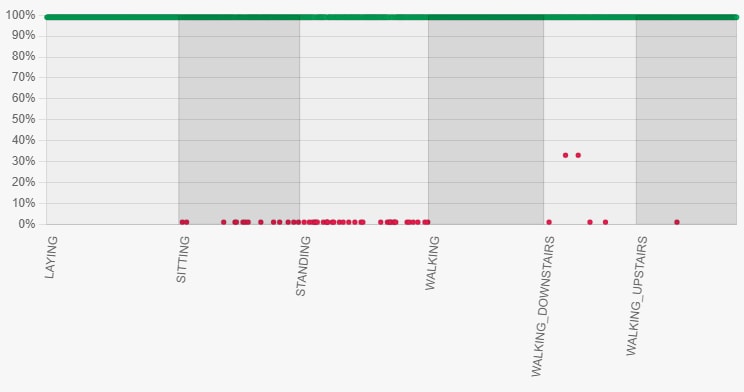Human activity recognition using a smartphone
Using a smartphone to recognize human activities.

Embedding an optimized AI model, a smartphone can become a personalized activity recognition system capable of understanding and categorizing your own movements. From walking, running and cycling to more complex activities including yoga and weightlifting, a smartphone can monitor your progress and make informed decisions about your fitness routine.
Approach
An accelerometer and a gyroscope inside a smartphone are used to capture linear acceleration and angular velocity data at a rate of 50 Hz. The training and test files are then sorted into several files; one for each of the five activities. The 'Activity' (label) column is then deleted from each file. Finally, we used NanoEdge AI Studio to train an N-class classification model based on these inputs.
Sensor
Data
Signal length 562 (multi-sensors)
Data rate 50 Hz
Results
N-class classification:
96.35% accuracy, 6.7 Kbytes of RAM, 15.2 Kbytes of Flash memory



Green points represent well classified signals. Red points represent misclassified signals. The classes are on the abscissa and the confidence of the prediction is on the ordinate
Resources
Model created with NanoEdge AI Studio
A free AutoML software for adding AI to embedded projects, guiding users step by step to easily find the optimal AI model for their requirements.
The STM32 family of 32-bit microcontrollers based on the Arm Cortex®-M processor is designed to offer new degrees of freedom to MCU users. It offers products combining very high performance, real-time capabilities, digital signal processing, low-power / low-voltage operation, and connectivity, while maintaining full integration and ease of development.